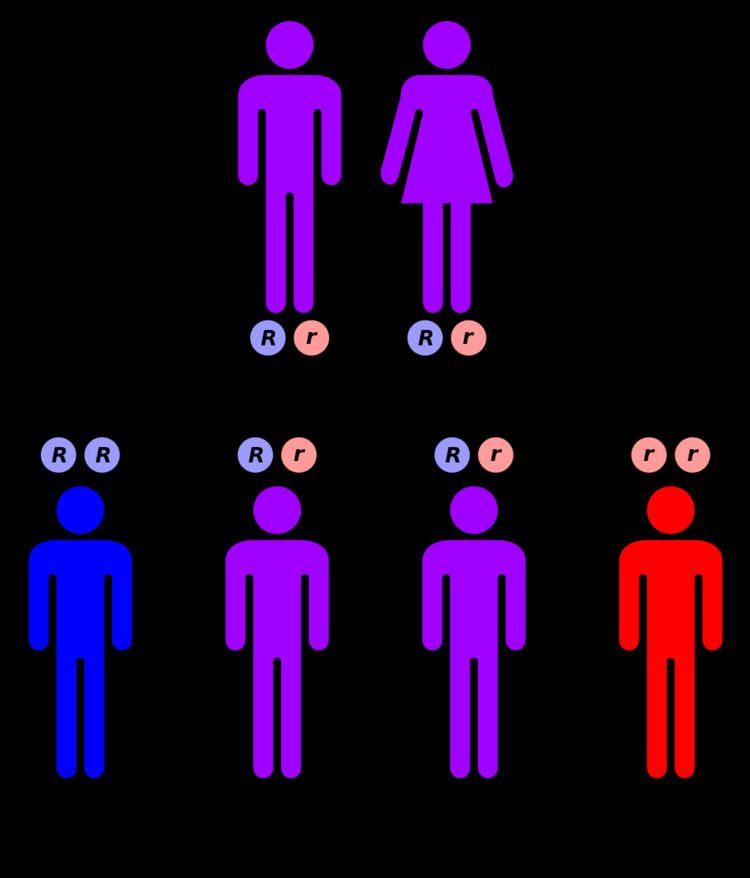OMIM 211000 | DiseasesDB 33872 | |
 | ||
Blue diaper syndrome is a rare, autosomal recessive metabolic disorder characterized in infants by bluish urine-stained diapers. It is also known as Drummond's syndrome, and hypercalcemia.
Contents
It is caused by a defect in tryptophan absorption. Bacterial degradation of unabsorbed tryptophan in the intestine leads to excessive indole production and thus to indicanuria which, on oxidation to indigo blue, causes a peculiar bluish discoloration of the diaper (indoluria). Symptoms typically include digestive disturbances, fever and visual problems. Some may also develop disease due to the incomplete breakdown of tryptophan
It was characterized in 1964, and is associated with the X linked sex gene.
Since this syndrome is X linked, the chance for a child to receive normal genes from both parents and be genetically normal for that particular trait is 25%. If an individual receives one normal gene and one gene for the disease, the person will be a carrier for the disease, but usually will not show symptoms. Carrier females usually do not display symptoms of the disorder because it is usually the X chromosome with the abnormal gene that is “turned off”. Parents can undergo genetic testing to see if their child will get this syndrome, but most do not find out until they see the symptoms mentioned below.
Symptoms
The symptoms of blue diaper syndrome could include irritability, constipation, poor appetite, vomiting, and poor growth. Some children experience frequent fevers and intestinal infections.
Hypercalcemia could be a potential issue in affected children. Some children with blue diaper syndrome have eye or vision issues, particularly underdeveloped portions of the eye, including the cornea and optic disc.
Epidemiology
Blue diaper syndrome affects males and females equally. The number of people affected in the general population is unknown.
Blue diaper syndrome is thought to be inherited as an autosomal recessive disorder.
Recent research indicates that mutations in the LAT2 and TAT1 genes might be involved in causing this syndrome.
It is linked to X linked gene and in order for a person to develop it, both parents must carry the gene. This syndrome is diagnosed through clinical evaluation and a fresh urine sample
Treatment
Children with blue diaper syndrome are put on restricted diets. This is in effort to reduce kidney damage. Restrictions include: calcium, protein, vitamin D, and tryptophan. Calcium is restricted to help prevent kidney damage. Examples of food with high levels of tryptophan include turkey and warm milk.
Antibiotics may be used to control or eliminate particular intestinal bacteria. Nicotinic acid may be used to control intestinal infections.
Genetic counseling can also be beneficial, as well as taking part in clinical trials.
